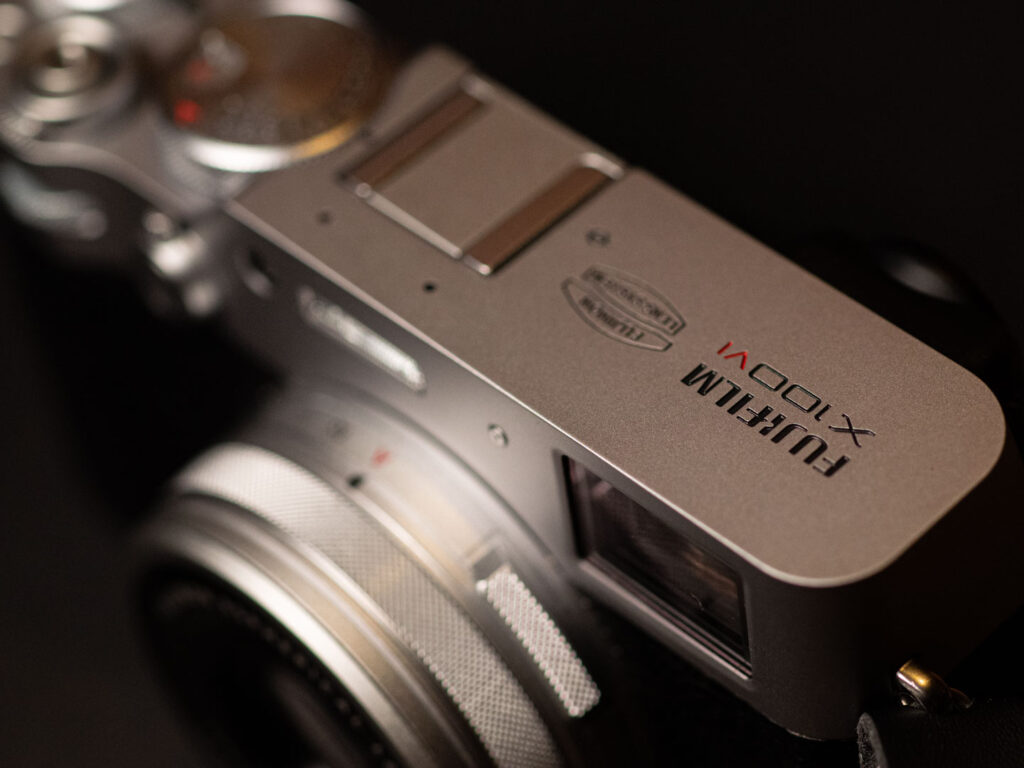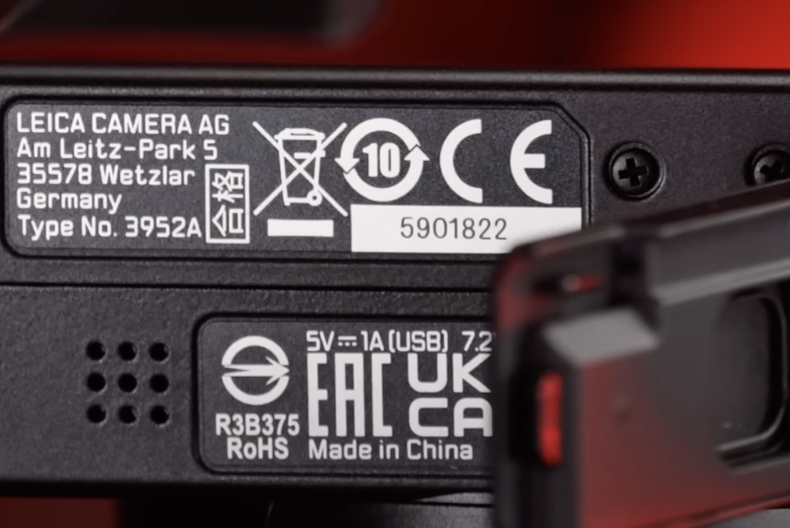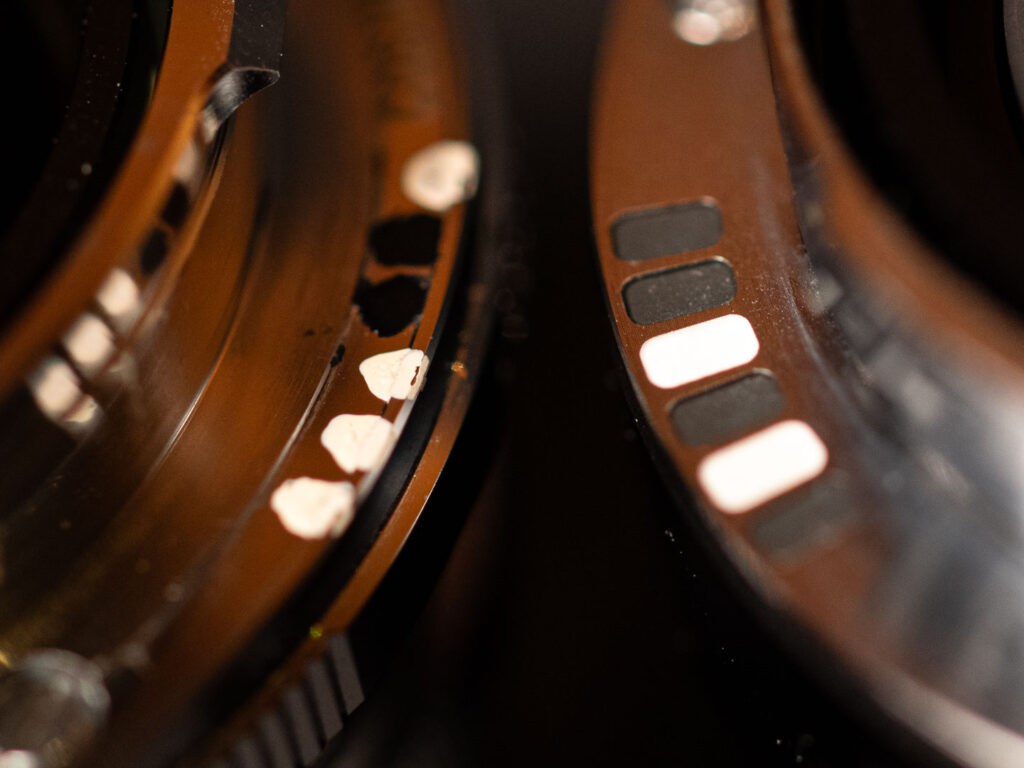If you own an interchangeable-lens camera, chances are you own a few ‘third-party lenses’. They can often deliver high optical performance at a much lower cost than a comparable one from your camera’s manufacturer. This week, we have a few stories from the world of third-party lenses. We learn something of Sigma’s lens-design philosophy, and a new entrant to the L-Mount ecosystem. And for you M-shooters out there, we have news of a nifty device for 6-bit coding your third-party M-lenses. OK, time to focus.
An interview with the CEO of Sigma
Do you own a Sigma lens? Many Macfilos readers do, especially if they are proud owners of L-Mount cameras. They are one of the big players in third-party lenses. Since Sigma are a founding member of the L-Mount Alliance, we take a keen interest in the company’s plans. We therefore took note of a recent interview with Sigma’s CEO, Kazuto Yamaki. Surely, he would share something about what his team is cooking up in the Sigma lens kitchen.
You can read the full interview here, but here are some of the main messages we took away:
- Sigma aims to continuing innovating. However, some customers value compactness and lightness more than a relentless drive for optical perfection.
- They also realize that many of the young people switching from iPhones to interchangeable-lens cameras are cost-conscious. It is therefore important to offer lenses which are affordable.
- Sigma will manufacture niche products, such as their 14mm, f/1.4 lens. They have aimed this lens squarely at astrophotographers, who are exceptionally demanding when it comes to optical performance.
- The company is willing to be a guinea-pig, trying out new approaches, such as novel glass materials. If they succeed, they are very happy for other manufacturers to follow their lead.
- Polishing lenses is not as predictable as other areas of manufacturing. When they are producing a batch of 1,000 lenses, they will start with 1,100. They know that they will discard 100 because of manufacturing failures.
A new L-Mount zoom lens from Samyang

Samyang, the South Korean optics company, is introducing its first L-Mount lens. It’s a 35-150mm f/2-2.8 zoom, which has been available with a Sony E-Mount since 2023. In the US it will be released under the Rokinon brand.
On the face of it, this looks like a very attractive package. It would, in principle, cover prime focal-range territory for prime lenses. So, you could leave your 35mm, 50mm, 90mm, and 135mm prime lenses at home and just set off with this bad boy.
Its fast maximum aperture also puts it in direct competition with f/2 prime lenses and many fixed aperture f/2.8 zoom lenses. However, achieving this degree of versatility comes at the cost of complexity, size, and weight. The length ranges from 155.4mm at rest, to 195.9mm fully extended. The weight, without lens cap or hood, is 1.206 kg.
The Samyang 35-150mm f/2-2.8 will be shipping in late June/early July at a recommended retail price of £1,194 in the UK and $1,499 in the US. Full details on this lens, including sample photos and full specification, are available at the LK Samyang site.

You can read more about the new lens here at Digital Camera World.
Fuji X100IV and the Leica Q effect
Month-long waiting lists and online resale platform prices well over the manufacturer’s RRP: That sounds familiar to Leica customers, doesn’t it? We all remember the patience needed after launch of the M10 or the Q3 cameras. Now, aspirants to a Fujifilm X100VI are experiencing the same thing. While giving a sense of exclusivity, waiting lists are more of a problem for the dealers than a welcome marketing aid. And be it only because many customers have their names put on multiple list only to call them off when it is finally their turn – because they had already been provided with the object of desire elsewhere.
But the good news is that Fuji X100VI cameras are slowly percolating into the market new. Courageous customers who decided early have already got their copy, and also here at Macfilos, we expect to be able to publish an in-depth review after extensive practical use in the next few weeks. As a regular reader, you know our policy: We would rather not be among the first reviews but rather among the most useful ones. Jono Slack and Claus Sassenberg have done much to foster this reputation for Leica reviews. When we take on the occasional camera from another brand, this is our gold standard.
The competition heats up
What we can already say: The Fuji X100VI could represent significant competition for the Leica Q3 – with pros and cons for each option. Good news for the travel season, as both cameras are excellent companions for all kind of journeys. In his overview for the Forbes magazine, Christian de Looper sadly ignored the Leica options, and TechRadar brings up another option, albeit not as compact. But then again, there is also criticism of the new Fuji Wunderkind, and if you read Richard Butler’s very interesting opinion piece on DPReview, you might come to think (like the author in his last paragraph?) that Leica might be the better choice…
Leica D-Lux 8: Made in China
Eagle-eyed reader David Mantripp has noticed that the “one-and-only” D-Lux 8 video by Bobby Tonelli clearly shows that the new camera is made in China, rather than in Portugal as we speculated in our comparison between the Panasonic S9 and the D-Lux 8. In his comment, he says:
If you look closely on the one video available, you can quite clearly see the fateful words MADE IN CHINA on the baseplate 🙂 Personally, I don’t find that significant in terms of potential quality. Some great stuff comes out of China. But it’s not so good for the image, or countering the badge engineering argument.
David Mantripp
We agree with David that we shouldn’t be concerned about quality, although this goes against all the hints and whispers we had heard. They firmly suggested that the D-Lux 8 would be a Leica product, and we interpreted this to mean that it would at least be assembled in Europe. We understood that the old LX100 II was made in China, while the D-Lux 7 was made in Japan. But Leica’s new version is almost certainly coming from the same factory as the LX100 II.
We look forward to getting our hands on the D-Lux 8 when it arrives in the UK in July.
Lumix S 26mm f/8 pancake: Missing something vital
The basic plastic-mount 26mm pancake was rushed to the Panasonic S9 launch for an excellent reason. This camera needs a small lens to emphasise its “smallest” full-frame boasts. With any other existing lens in the Lumix range, it isn’t really all that compact. According to the irrepressible duo, Kai Wong and Lok Cheung tried really hard to be nice to this little lens, but the takeaway is that it is a pancake that’s missing vital ingredients.
Small it may be, but the shortcomings are there. Image quality is acceptable, but the lack of autofocus is a major disadvantage for the market this lens and camera is aimed at. And, as a manual-focus camera, it lacks a focus scale and, what’s more, focus is easily knocked out of setting. Its saving grace is the price — currently £219 on the street — and size. But watch what Kai has to say…
That Sigma 28-45 f/1.8 zoom
Sigma’s 28-45mm f/1.8 zoom has caused quite a stir in the comments section of our launch article published last Monday. Too heavy, aimed squarely at videographers, and unnecessary, say some. The more you look at this lens, the more odd it becomes. With such a small zoom range, the suggestion that you’d be better off with a fast 28mm prime is quite sensible. With today’s high-resolution sensors, cropping from 28mm to a 45mm equivalent is quite feasible and, for many, this is now the preferred route.
As an example, the Leica Q3 with its fixed 28mm lens offers a similarly fast speed (f/1.7) and outstanding image quality. Cropping to 45mm is no problem. Yet, the Q3 — camera and lens together — weighs under 750g compared with the Sigma 28-45 weight of 960g. Even mounted on a relatively lightweight Panasonic S5II, the entire rig weighs over 1.7kg, a full kilogram heavier than the Q3. No doubt, though, the Sigma zoom will find a home, particularly among videographers. It seems, though, this lens is not high on the list for Macfilos readers.
Here are some reviews of the Sigma 28-45 f/1.8 zoom
- This world’s first f/1.8 Zoom is the New Testament (Digital Camera Word)
- Limited zoom, maximum light (Petapixel, with video)
- Sample gallery (DPReview)
- Wow — but is it enough? (Froknowsphoto)
- Sigma shakes up the full-frame game with revolutionary lens (Fstoppers)
DIY 6-bit coding for M-Mount lenses
There are good reasons why newer M-Mount lenses from Leica have 6-bit coding. This ‘analogue’ way of conveying information tells the camera which lens is attached. Thus, the camera can apply correction profiles for distortion, vignetting, and other optical errors. And the camera can write the info on the lens actually used into the EXIF data. That’s useful if you want to keep track of your lenses’ performance. Attached to a Leica SL2 or 3 via the original Leica adapter, this information is also crucial for image stabilization.
Third-party lenses usually have no 6-bit coding. We have seen in our M Files Series that they can bring about excellent results all the same. But there are moments when coding would be useful. There have been do-it-yourself solutions around for years, but now there seems to be finally a really smart device. AkaraLabs has created a solid and, as it seems, easy to use template, and they provide a chart which code fits which older (aka non-coded) Leica lens. For some poplar lenses from Voigtländer and Zeiss, there are even suggestions which profile fits best.
Stay tuned
Jörg-Peter, our third-party M-Mount lens specialist, has already ordered one AkaraLabs template (£18 plus shipping). He will give it a try as soon as he receives the tool. Stay tuned for a special episode of the M-Files in which he will describe his workflow from the moment he presses the shutter of a (analogue or digital) M-Mount camera to an image file with complete EXIF data in Lightroom.
All in all, this might be excellent news for owners of third-party lenses from Zeiss, Voigtländer, Konica, Minolta, and Rollei. And of course, for all of us who have bought some new M-Mount lenses from China. Because even if you would rather not use in-camera lens corrections, the coding does have at least one additional effect. We will also report on this in the promised instalment of the M Files.
Want to contribute an article to Macfilos? It’s easy. Just click the “Write for Us” button. We’ll help with the writing and guide you through the process.











After seeing the Akaralabs template on YouTube a few weeks back, I purchased one straight away to 6-bit code a couple of my favourite Voigtländer Nokton lenses. It works a treat and I can thoroughly recommended it.
I must try this 6-bit encoder! Thank you for sharing this. 🙂
Hi Brandon, this is most likely a good idea. I ordered one right away and will share my experiences here. It would be great to hear your comment then as well! All the best, Jörg-Peter
Sigma has become a major force in recent years. They are no longer a lower price secondary choice if you could not afford the Nikon, Canon or Leica option. In fact, a number of Sigmas lenses performed in general equally to my Leica glass in my personal opinion. Leica has actually rebranded some of their lenses. Sigma has the courage to bring out specialized glass not offered by mainstream camera manufacturers. The CEO is a rare refreshingly frank transparent business man that clearly states their strategy and plans. When they finally conquer their new sensor design and deliver a camera and will be on the preorder list well in advance of the official announcement.
Shooting Nikons for now for 43 years, I never put any lens on my cameras that did not say Nikkor on them. Until a few weeks ago when I purchased a Voigtländer 40mm f2 Ultron pancake style lens.